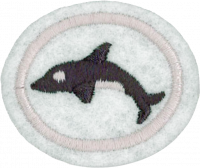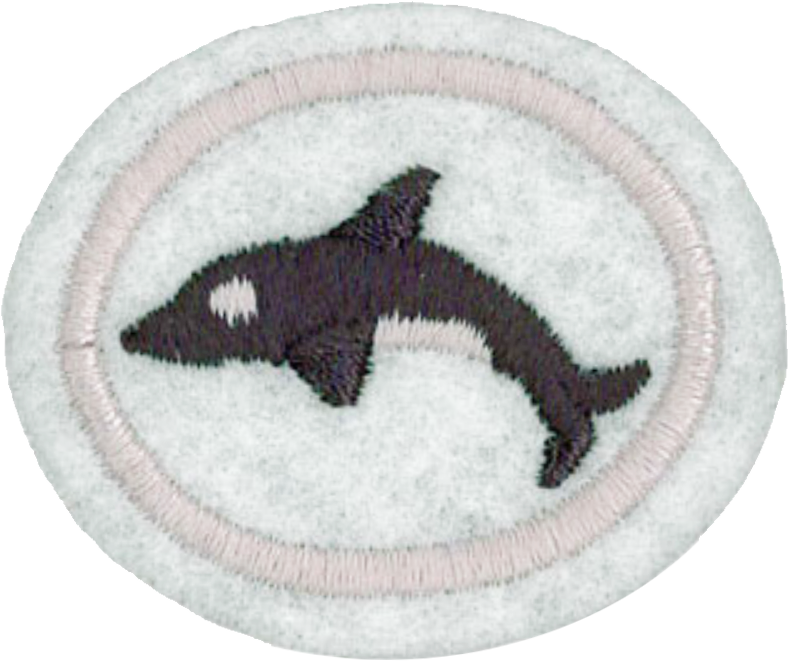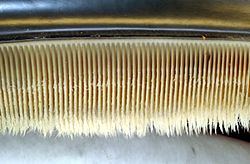Respuestas para la especialidad JA de Mamíferos marinos
Nivel de destreza
2
Año
1991
Version
27.12.2025
Autoridad de aprobación
Asociación General
1
1a
Adventist Youth Honors Answer Book/Species Account/Delphinapterus leucas/es
Adventist Youth Honors Answer Book/Species Account/Monodon monoceros/es
Adventist Youth Honors Answer Book/Species Account/Physeter macrocephalus/es
Adventist Youth Honors Answer Book/Species Account/Kogia breviceps/es
Adventist Youth Honors Answer Book/Species Account/Berardius/es
Adventist Youth Honors Answer Book/Species Account/Hyperoodon/es
Adventist Youth Honors Answer Book/Species Account/Ziphius cavirostris/es
1b
Adventist Youth Honors Answer Book/Species Account/Balaenoptera musculus/es
Adventist Youth Honors Answer Book/Species Account/Balaena mysticetus/es
Adventist Youth Honors Answer Book/Species Account/Megaptera novaeangliae/es
Adventist Youth Honors Answer Book/Species Account/Eschrichtius robustus/esAdventist Youth Honors Answer Book/Species Account/Caperea marginata/es
1c
Adventist Youth Honors Answer Book/Species Account/Monachus schauinslandi/es Adventist Youth Honors Answer Book/Species Account/Mirounga/es Adventist Youth Honors Answer Book/Species Account/Hydrurga leptonyx/es Adventist Youth Honors Answer Book/Species Account/Halichoerus grypus/es
1d
1e
Adventist Youth Honors Answer Book/Species Account/Orcinus orca/es
Adventist Youth Honors Answer Book/Species Account/Tursiops truncatus/es
Adventist Youth Honors Answer Book/Species Account/Delphinus delphis/es
Adventist Youth Honors Answer Book/Species Account/Neophocaena phocaenoides/es
Adventist Youth Honors Answer Book/Species Account/Phocoena phocaena/es
1f
1g
1h
Adventist Youth Honors Answer Book/Species Account/Trichechus inunguis/es Adventist Youth Honors Answer Book/Species Account/Trichechus manatus/es Adventist Youth Honors Answer Book/Species Account/Trichechus senegalensis/es
2
3
4
4a
4b
Echolocation is the biological sonar used by several mammals such as bats, dolphins and whales.
Animals that use echolocation emit calls out to the environment. They listen to the echoes that return from various objects in the environment. They use these echoes to locate, range and identify the objects. Echolocation is used for navigation and for foraging (or hunting) in various environments.
Toothed whales, including dolphins, porpoises, river dolphins, orcas and sperm whales, use echolocation because they live in an underwater habitat that has favorable acoustic characteristics and where vision is extremely limited in range due to absorption or turbidity.
4c
Spyhopping is when a dolphin and whales are in a vertical stance so they can look at their surroundings above the water. The whale slowly rises straight out of the water, until its eye is above the water surface. After a few moments, the whale sinks back down. Again, we cannot be sure why whales spyhop, but they may be coming up to take a look around.
4d
Baleen makes up baleen plates, which are arranged in two parallel rows that look like combs of thick hair; they are attached to the upper jaws of baleen whales. Whales use these combs for filter feeding. Baleen whales scoop vast amounts of water into their mouths, and then push the water back out their mouths through the baleen plates. The baleen plates prevent fish and plankton from flowing out of their mouths. Whales are the only vertebrate group to use this method of feeding in great abundance (flamingos and crabeater seals use similar methods, but do not have baleen), and it has allowed them to grow to immense sizes.
4e
A pod is a social group of whales, porpoises, or dolphins.
4f
A harem is a group of female seals, which are corralled together by a male for the purpose of mating. The male Northern Fur Seals are possessive of individual females in their harem, often aggressively competing with neighboring males for females. Some males breed with up to 50 females in a single breeding season. Some types of whales also have harems.
4g
Plankton are defined as any drifting organism that inhabits the water column of oceans, seas, and bodies of fresh water. They are widely considered to be one of the most important organisms on Earth, due to the food supply they provide to most aquatic life.
5
- phytoplankton → copepod → fish → squid → seal → orca
This "chain" can be described as follows: Orca (also known as "killer whales") feed upon seals, that feed upon squid, that eat small fish, that feed on copepods, that feed on microscopic algae.
- phytoplankton → krill → baleen whales
Food loses efficiency as it travels up the food chain from prey to predator. This is because each creature in the chain uses some of the energy it gained from its food. By keeping their food chain short, baleen whales are able to efficiently consume enormous amounts of energy, and therefore, they are able to grow to enormous sizes.
6
Blubber is a thick layer of fat found under the skin of all cetaceans, pinnipeds and sirenians. It covers the whole body, except for the appendages, loosely attached to the muscles. It can comprise up to 50% of the body mass of some marine mammals during some points in their lives. Blubber serves several different functions, it is the primary area of fat on some mammals, and essential for storing energy. It is particularly important for species which feed and breed in different parts of the ocean. During these periods the species are operating on a fat-based metabolism.
Blubber also serves as an efficient thermal insulator, making it an essential for thermoregulation. It has advantages over fur (as used in Sea Otters) in this respect; fur can retain heat by holding pockets of air, but under pressure (while diving) the air pockets will be expelled. Blubber, however, does not compress under pressure. It can also aid in buoyancy, and acts to streamline the body.
7
Seals are hunted for their fur, meat and oil. They are also hunted by fishermen to eliminate competition for fish. Seals sometimes take bites out of fish already caught in a fisherman's net, making the fish unfit for sale.
8
The seal's flippers are enormously long, and the skin between them forms a web which is used like a paddle to propel the seal along. They have long, sturdy claws on their front flippers which they use to help them move on land, especially when they need to grip onto rocks or ice
9
9a
This option will almost certainly be the most rewarding for your Pathfinders, but it will also require the most work on your part to get it organized. Try to contact the aquarium before setting off on your trip so that you can make arrangements to meet with a staff member there. They are usually very willing to help you, and will be delighted to provide you with information regarding the daily feeding schedule. Note that some zoos have aquariums too, so if a zoo is more convenient than an aquarium, you might want to investigate this possibility.
Si piensa visitar un zoológico o acuario, tenga en cuenta que hay varias especialidades que tienen requisitos que se pueden cumplir visitando un zoológico o acuario. Los individuos pueden trabajar en varias especialidades en una visita, o partes de su grupo pueden trabajar en diferentes especialidades durante la misma visita.
Aquí hay una lista de especialidades que tienen requisitos que se pueden cumplir visitando un zoológico o acuario:
Bosques templados caducifolios
9b
Much of the material for the answers presented here was taken from Wikipedia. You can start your research by reading the full articles:
9c
Search Google News for marine mammals to find out about current events. http://news.google.com/news?hl=en&ned=us&q=marine+mammal&btnG=Search+News You can also search http://news.google.com for a particular marine mammal (such as whales, seals, dolphins, or manatees).
Note
This Honor and the Cetaceans Honor have considerable overlap. Consider working on them together.
References
Much of the material here as adapted from numerous Wikipedia articles.



